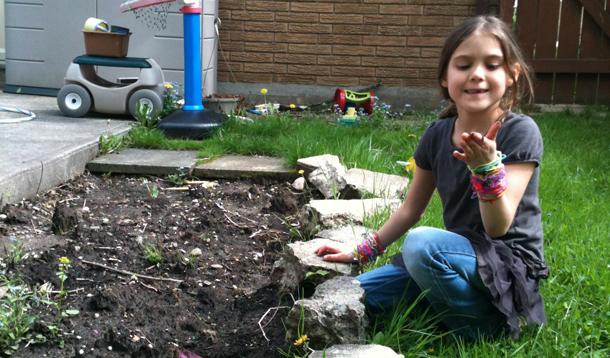
Today sky is green and grass is blue. My six-year-old has deemed it so and today I recognize in her the inability to see otherwise. So it is a day when the rules of physics and colours and Chinese checkers will be scrapped.
Some would look at me today and think of Barbara Coloroso’s jellyfish. Some will argue that the sky is blue all day, even with a six-year-old, because it is so important for them to be right that they are unable to see pain, frustration, disability and coping mechanisms just beneath the surface. Few get this, really. Adults, teachers, grandparents, schools and so many other systems like rules. If you sit in your seat, you get stickers and if you are six you should be able to tie your shoelaces and if you are ten you should surely be able to read.
But I have seen too many children with special needs struggling. In this world, rules often don’t apply.
My youngest daughter has a brain injury, a physical disability caused by prenatal exposure to alcohol and other substances. She came to us through adoption, a tiny bundle of mystery. Her diagnoses are: SPD, sensory processing disorder, and FASD, fetal alcohol spectrum disorder. On a day when I drive a different route to school she is lost. Every Saturday she wakes up confused, often yelling. Like the movie Groundhog Day, we repeat the script again and again. Today is Saturday. Dad doesn’t go to work. Ainsley does martial arts. Next comes yoga and then lunch. She needs to know what Saturday looks like again. We are getting good at painting pictures. Her brain looks different than most. It works on a different level. Rarely linear. My child can be in one day: eight and three and two and six. My daughter’s brain thinks—not unlike Temple Grandin’s—in pictures. Grandin, the famous writer of several books, is on the autism spectrum. Autism and FASD are both cognitive disabilities, brain-based with communication and sensory processing components. There are, I think, many similarities.
Some look at children and young adults with FASD, a disability that has a massive range of faces from severely cognitively impaired with an IQ of under 80, to that of a person with gifted range IQ and they see wilful misbehaviour. Easy to see only won’t when, in fact, it is a case of can’t. There are an estimated 300,000 people in Canada affected by FASD. They are mostly invisible. Some are in prisons. Some walk among us.
One is my daughter.
Perplexing? Yes, it is.
On Thursday you can write the number six and on Friday it is gone. Vanished entirely and back again the next week. Which brings me to Chinese checkers. I haven’t played this game since I was a teenager. My concept of the rules is fuzzy, at best. On a fall Saturday at a weekend getaway for kids with FASD I spy a ten-year-old girl who wants to play. She is shy, unable to ask for what she needs. Hallmarks of an invisible disability. I sit and ask if she wants to play. Never once will she make eye contact. I inquire about her knowledge of the rules and she explains. You move this way and that and the aim is to get across the board. Today, I let her take the lead. At one point it is abundantly clear to me we are blindly leading each other through the oddest game of Chinese checkers I have ever played.
And then it hits me. The metaphor for life with a child who has special needs.You might as well throw the rule book out the door because the answers aren’t there. They are here, in the doing of the thing. The experience. You cannot push this child to the rules. You cannot force the learning. You can simply breathe, be present, and open to the idea of doing this all again tomorrow.